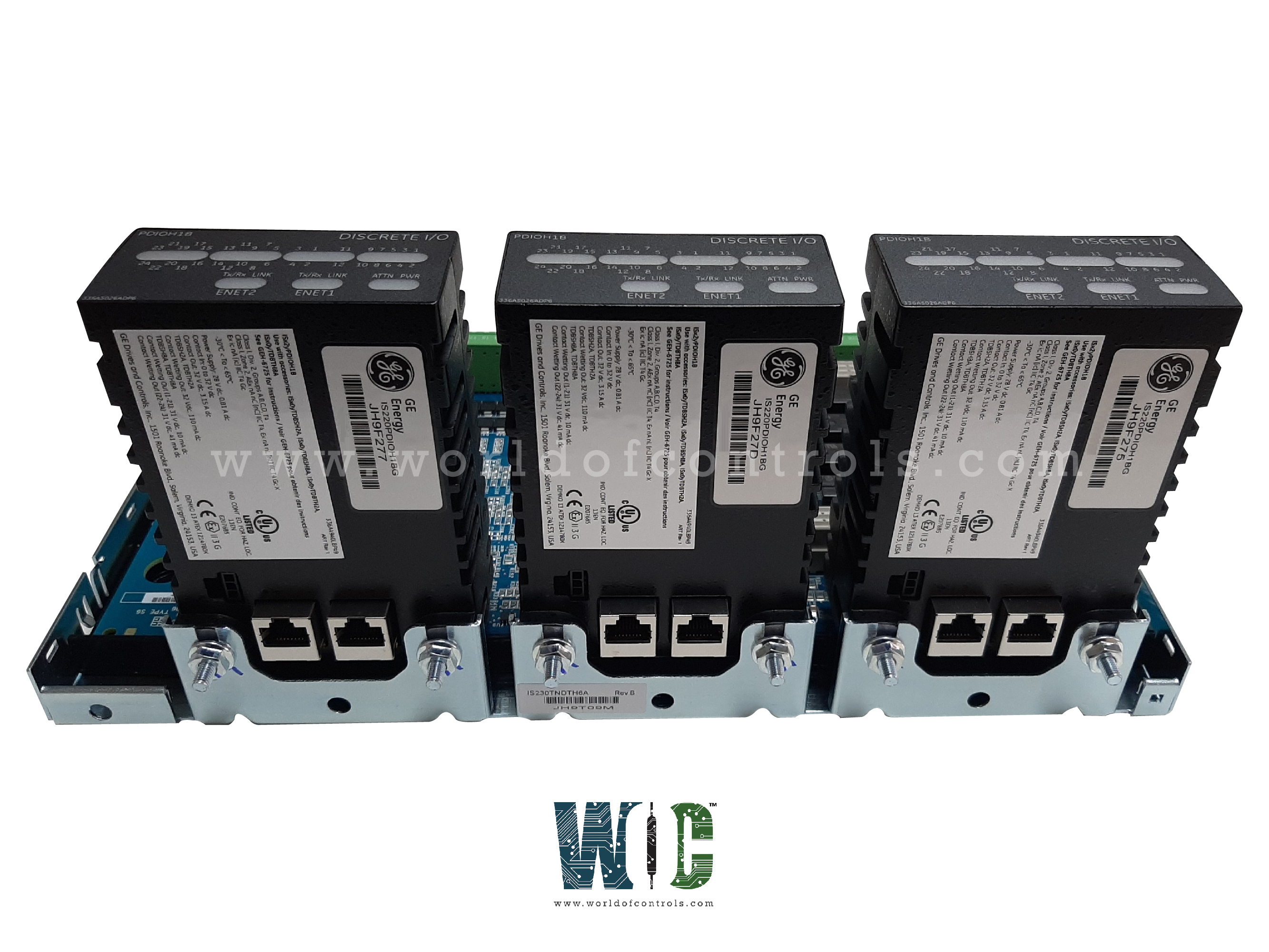
World Of Controls understands the criticality of your requirement and works towards reducing the lead time as much as possible.
IS230TNTCH1C - Simplex Thermocouple Input Assembly Module is available in stock which ships the same day.
IS230TNTCH1C - Simplex Thermocouple Input Assembly Module comes in UNUSED as well as REBUILT condition.
To avail our best deals for IS230TNTCH1C - Simplex Thermocouple Input Assembly Module, contact us and we will get back to you within 24 hours.
SPECIFICATIONS:
Part Number: IS230TNTCH1C
Manufacturer: General Electric
Series: Mark VIe
Product Type: Simplex Thermocouple Input Assembly Module
Board rating: 125 V dc
Fuse for connectors J7X, J7Y, J7Z - FU71-FU76
Fuse for connectors JBA, JBB - FU81-Fu84
Common Mode Voltage Range: ±5 V
Dimensions: 11.00 x 9.00 x 3.00
Operating temperature: 0 to 60 °C
No.of Analog Voltage Inputs: 6
Repair: 3-7 Day
Availability: In Stock
Country of Origin: United States
FUNCTIONAL DESCRIPTION:
IS230TNTCH1C is a Simplex Thermocouple Input Assembly Module manufactured and designed by General Electric as part of the VIe Series used in GE Distributed Gas Turbine Control Systems. The Simplex Thermocouple Input Assembly Module (STIAM) plays a crucial role in industrial and commercial applications that rely on accurate temperature measurement. Here's a breakdown of its function, components, and key points:
FUNCTIONS:
COMPONENTS:
WOC has the largest stock of OEM replacement parts for GE Distributed Control Systems. We can also repair your faulty boards and supply unused and rebuilt boards backed up with a warranty. Our team of experts is available round the clock to support your OEM needs. Our team of experts at WOC is happy to assist you with any of your automation requirements. For pricing and availability on parts and repairs, kindly contact our team by phone or email.
What is a Simplex Thermocouple Input Assembly Module?
The Simplex Thermocouple Input Assembly Module is a device used to measure temperature using thermocouples. It is designed for integration into Distributed Control Systems (DCS) for accurate and reliable temperature monitoring and control.
Which types of thermocouples are compatible with this module?
The module is compatible with various thermocouple types, including J, K, T, E, N, R, S, and B types, making it versatile for different industrial applications.
How does this module benefit a Distributed Control System?
The module provides precise temperature data essential for optimizing process control, enhancing system reliability, and ensuring safety. Its seamless integration with DCS allows for real-time temperature monitoring and control, improving overall system efficiency.